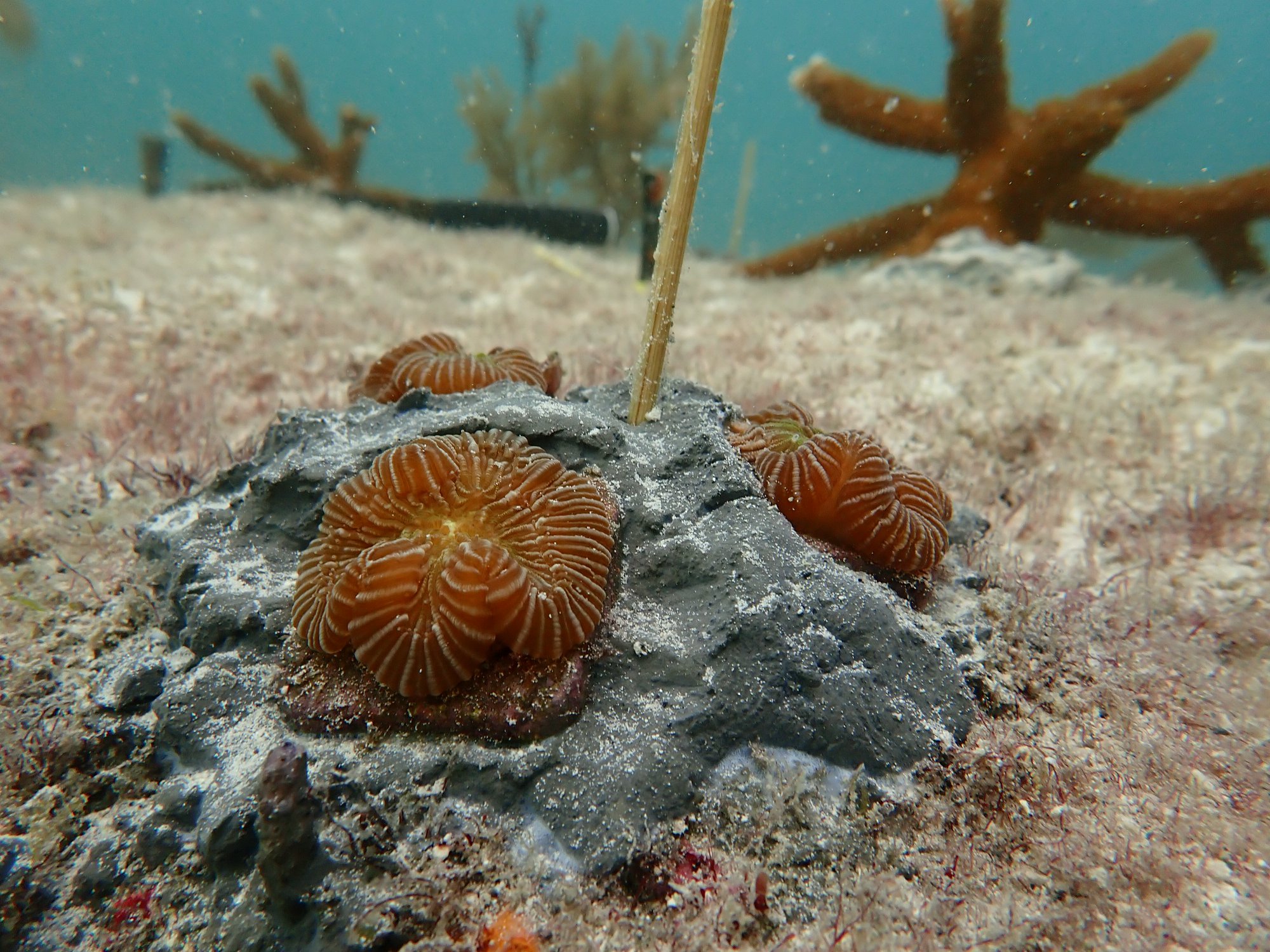Recently, The Florida Aquarium has been working to relocate 560 corals at an offshore reef site near Long Key, Florida. This is part of the Aquarium’s team of coral scientists’ efforts to restore Florida’s Coral Reef before it’s too late. All corals were bred and raised at The Florida Aquarium’s Center for Conservation. Find out more about how the Florida Aquarium relocates coral to help with their survival and growth.
Florida Aquarium relocates coral
“We spent three days at the site under near perfect conditions,” said Rachel Serafin, senior coral biologist. “With incredible weather and fantastic underwater visibility, we were able to find an ideal site on Tennessee Reef, which we nicknamed “Squid Row” for the reef squid we found there!”
Related: The FWC Is Looking for Bear Response Contractors for Central Florida
All corals are offspring from parent colonies collected as part of the Association of Zoos and Aquariums Florida Reef Tract Rescue Project, led by the Florida Fish and Wildlife Conservation Commission and NOAA Fisheries. These juvenile corals, between 20 and 24 months old, were raised from larvae produced during Aquarium spawning events conducted at the Center for Conservation in 2020. The corals were held overnight in seawater aquarium systems at the Keys Marine Laboratory before being returned to the reef.
The four coral species involved were:




Left to right – boulder brain (Colpophyllia natans), grooved brain (Diploria labyrinthiformis), symmetrical brain (Pseudodiploria strigosa) and spiny flower (Mussa angulosa).
“We completed everything that we needed to get done–outplanting, measurements, pictures–and everything went incredibly smoothly,” added Serafin.
The goal of this outplant is not only to support coral restoration efforts in the Florida Keys National Marine Sanctuary but also to determine whether planting closely related coral offspring grown in a land-based, lab setting in proximity to one another will be beneficial or harmful to their survival and growth.
Related: Lucky Fisherman Wins Thousands in FWC Trophy Catch Competition
“The ultimate objective of this study is to maximize and record the amount of total coral cover,” said Brian Reckenbeil, The Florida Aquarium’s coral restoration manager and co-lead for this trip. “Corals will be monitored one day post and two weeks post outplanting and subsequently every six months for two and half years. Coral attributes that may be measured in the field include fate, size, percent of survival, percent of bleaching and reason of new mortality.
“After 24 hours, the corals were stable and had great color,” said Serafin. “It was exciting to see the spiny flower coral returned to the reef for the first time.”
The team of coral biologists is currently reviewing the data gathered during the first monitoring and will be following up this week for a two-week check-up. They will continue to do so over the next few years in order to determine the best methods to incorporate juvenile brain corals into larger restoration efforts such as Mission Iconic Reefs.
More stories from Modern Globe
- Report Finds Over 10% of Young People in Pinellas Not Employed — But There’s a Solution
- March Job Fair to Connect Employers and Veterans in the Tampa Bay Area
- Move Over, Gyms and Pools: Renters Want Pet Areas and Happy Hour
- Climate First Bank Reduces Solar Loan Rates for Increased Access to Sustainable Living
- CSHP Offers New Veteran Training Opportunities




























